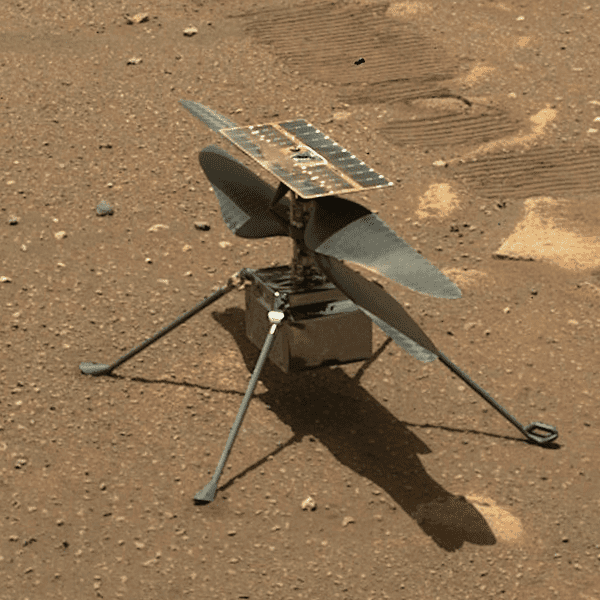It was only meant to be a proof of concept; a test of what could be possible. Ingenuity has proven itself to be more than worthy, and NASA researchers have now rewarded its success with more work — such is the life of a Mars explorer.

Ingenuity hitched a ride to Mars attached to the belly of the Perseverance rover. NASA envisions that one day, rover/helicopter duos could be the norm of planetary exploration, but that day seemed far away. Now, it doesn’t seem far at all.
The problem with flying a helicopter on a planet like Mars is that its atmosphere (if you can call it that) is 100 times thinner than what we have on Earth, which makes flying way more difficult. When Ingenuity powered itself up over the Martian soil, it was a real Wright brothers moment — the first man-made vehicle to fly on a planet other than the Earth.
If Ingenuity had crashed on its second flight, it probably wouldn’t even have been all that bad. After all, its main goal was to fly up to five times, at altitudes no higher than 5 meters, for 90 seconds each. Now, after 12 flights in which the helicopter rose to a height of 12 m (39 ft), achieved all its objectives and gathered all the information it was meant to, NASA has finally extended its mission indefinitely.

“Everything is working so well,” said Josh Ravich, the head of Ingenuity’s mechanical engineering team. “We’re doing better on the surface than we had expected.”
Ingenuity has been now switched to a new operations demonstration phase, showcasing how rovers and aerial explorers can work together. After a series of roundtrip flights, Ingenuity has been embarking on a series of one-way trips, accompanying the Perseverance rover as it explores Mars, surveying and taking photos from above. Overall, the helicopter has flown 2.83 km (1.76 mi) and shows no signs of stopping soon.

Surveying Mars from above is more than just a show of strength — it’s already paying dividends. For instance, flights taken by Ingenuity during its 12th flight showed that one region on Mars (dubbed South Seitha) was not as interesting as researchers were hoping for. As a result, the rover may choose a different path and focus on exploring other regions.
Now, the Ingenuity team plans to make one flight every 2-3 weeks, as long as conditions remain favorable. So far, everything went according to plan, but at some point in October, all operations will need to be shut down, as Mars passes behind the Sun, blocking communications. If the helicopter is able to withstand this period and is responsive after it’s turned back on, the mission will resume.
Since the mission went so well, NASA is already looking at bigger helicopters carrying a bigger payload for future missions. No doubt, Ingenuity was amazing on its own — but it has also paved the way for some amazing science in the future.
Meanwhile, Perseverance is also carrying its own weight. After a botched first try, the rover managed to extract a rock sample from Mars, a sample that is set to return to Earth for analysis by 2031.
All in all, these are great times for Mars exploration. Who knows, maybe a space race is slowly starting to kick off.


